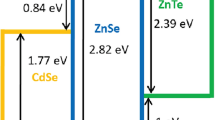Abstract
This work focuses on the factors causing appearance of a steady and continuous vapour-gas envelope which functions as medium for plasma electrolytic saturation of metal and alloys with interstitialelements (nitrogen, carbon, and boron). It is established that second critical voltage associated with transition from the current oscillation mode to the stable heating is determined by anion emission from boiling electrolyte in the envelope and heat transfer conditions in the system. Stability of the interface electrolyte–envelope is provided by the energy liberation in the envelope due to the passage ofcurrent. Second critical voltage promoting the anion emission is calculated on the base of Gouy–Chapman model and Tonks–Frenkel aperiodic instability. Theoretical dependence of critical voltage on the electrolyte concentration is confirmed experimentally. The influence of the electrolyte concentration on the second critical voltage is explained by the ability of the electrolyte to emit anions. Effect of solution flow rate on this voltage accounts for heat transfer conditions. It should be noted that the anion emission explains the influence of electrolyte composition on the weight change of the anode sample, limit heating temperature (~1000°C) due to the limited emissivity of electrolyte, discrete current in the case of a small surface anode, and high-frequency pulse of the current.
Similar content being viewed by others
References
Yerokhin, A.L., Nie, X., Leyland, A., Matthews, A., and Dowey, S.J., Plasma electrolysis for surface engineering, Surf. Coat. Tech., 1999, vol. 122, pp. 73–93.
Gupta, P., Tenhundfeld, G., Daigle, E.O., and Ryabkov, D., Electrolytic plasma technology: science and engineering, an overview, Surf. Coat. Tech., 2007, vol. 201, no. 21, pp. 8746–8760.
Belkin, P.N., Anode electrochemical thermal modification of metals and alloys, Surf. Eng. Appl. Electrochem., 2010, vol. 46, no. 6, pp. 558–569.
Meletis, E.I., Nie, X., Wang, F.L., and Jiang, J.C., Electrolytic plasma processing for cleaning and metalcoating of steel surface, Surf. Coat. Tech., 2002, vol. 150, pp. 246–256.
Pat. 6,022,468 USA (C21D 1/00) Electrolytic Hardening Process, Luk, S.-F., Leung, T.-P., Miu, W.-S., Pashby, I.-R., Eds., 08.02.2000.
Liang, J., Wang, K.Y., Guo, S.M., and Wahab, M.A., Influence of electrolytic plasma process on corrosion property of peened 304 austenitic stainless steel, Mater. Lett., 2011, vol. 65, pp. 510–513.
Nie, X., Wang, L., Yao, Z.C., Zhang, L., and Cheng, F., Sliding wear behaviour of electrolytic plasma nitrided cast iron and steel, Surf. Coat. Tech., 2005, vol. 200, nos. 5–6, pp. 1745–1750.
Shen, D.J., Wang, Y.L., Nash, P., and Xing, G.Z., A novel method of surface modification for steel by plasma electrolysis carbonitriding, Mat. Sci. Eng. A Struct., 2007, vol. 458, pp. 240–243.
Taheri, P. and Dehghanian, Ch., A phenomenological model of nanocrystalline coating production using plasma electrolytic saturation (PES) technique, Trans. B: Mech. Eng., 2009, vol. 16, no. 1, pp. 87–91.
Pang, H., Zhang, G.-L., Wang, X.-Q., Lv Guo-Hua, Chen Huan, and Yang Si-Ze, Mechanical performances of carbonitriding films on cast iron by plasma electrolytic carbonitriding, Chinese Phys. Lett., 2011, vol. 28, no. 11, pp. 103–118.
Belkin, P., Kusmanov, S., Naumov, A., and Parkaeva, Yu., Anodic plasma electrolytic nitrocarburizing of low-carbon steel, Adv. Mater. Res., 2013, vol. 704, pp. 31–36.
Tarakci, M., Korkmaz, K., Gencer, Y., and Usta, M., Plasma electrolytic surface carburized and hardening of pure iron, Surf. Coat. Tech., 2005, vol. 199, nos. 2–3, pp. 205–212.
Belkin, P.N., Dyakov, I.G., Zhirov, A.V., Kusmanov, S.A., and Mukhacheva, T.L., Effect of compositions of active electrolytes on properties of anodic carburization, Prot. Met. Phys. Chem. Surf., 2010, vol. 46, no. 6, pp. 715–720.
Bejar, M.A. and Henriquez, R., Surface hardening of steel by plasma-electrolysis boronizing, Mater. Design., 2009, vol. 30, pp. 1726–1728.
Wang, B., Xue, W., Wua, J., Jin, X., Hua, M., and Wu, J.Z., Characterization of surface hardened layers on Q235 low-carbon steel treated by plasma electrolytic borocarburizing, J. Alloy Compd., 2013, vol. 578, pp. 162–169.
Li, X.-M. and Han, Y., Porous nanocrystalline Ti(CxN1–x ) thick films by plasma electrolytic carbonitriding, Electroch. Commun., 2006, vol. 8, pp. 267–272.
Aliofkhazraei, M. and Sabour Roohaghdam, A., A novel method for preparing aluminum diffusion coating by nanocrystalline plasma electrolysis, Electrochem. Commun., 2007, vol. 9, pp. 2686–2691.
Belkin, P.N., Ganchar, V.I., Davydov, A.D., Dikusar, A.I., and Pasinkovskii, E.A., Anodic heating in aqueous solutions of electrolytes and its use for treating metal surfaces, Surf. Eng. Appl. Electrochem., 1997, no. 2, pp. 1–15.
Taylor, R.A. and Phelan, P.E., Pool boiling of nanofluids: comprehensive review of existing data and limited new data, Int. J. Heat. Mass. Transfer., 2009, vol. 52, nos. 23–24, pp. 5339–5347.
Garbarz-Olivier, J. and Guilpin, C., Etude des discharges electriques produites entre l’electrode et la solution lors des effects d’anode et de cathode dans les electrolytes aqueux, J. Chiem. Phys., 1975, vol. 72, no. 2, pp. 207–214.
Belkin, P.N., Ganchar, V.I., and Petrov, Yu.N., Conduction of the vapor film during electrolytic anode heating, Sov. Phys. Dokl., 1986, vol. 31, pp. 1001–1004.
Shadrin, S.Yu. and Belkin, P.N., Analysis of models for calculation of temperature of anode plasma electrolytic heating, Int. J. Heat. Mass Transfer., 2012, vol. 55, pp. 179–186.
Shiryaeva, S.O., Grigor’ev, A.I., and Morozov, V.V., On the appearance of ions near the charged surface of an intensely evaporating electrolyte, Tech. Phys., 2003, vol. 48, no. 7, pp. 822–828.
Landau, L.D. and Lifshitz, E.M., Electrodynamics of Continuous Media, 2 ed., Pergamon, 1984, vol. 8, p. 33.
Belkin, P.N. and Ganchar, V.I., Passage of a current through a vapor-gas sheath during anodic electrolytic heating, Surf. Eng. Appl. Electrochem., 1988, no. 5, pp. 97–102.
Ganchar, V.I., Zgardan, I.M., and Dicusar, A.I., Anodic dissolution of chromium during electrolytic heating, Surf. Eng. Appl. Electrochem., 1996, no. 5, pp. 13–19.
Author information
Authors and Affiliations
Corresponding author
Additional information
The article is published in the original.
About this article
Cite this article
Shadrin, S.Y., Zhirov, A.V. & Belkin, P.N. Formation regularities of gaseous vapour plasma envelope in electrolyzer. Surf. Engin. Appl.Electrochem. 52, 110–116 (2016). https://doi.org/10.3103/S1068375516010129
Received:
Accepted:
Published:
Issue Date:
DOI: https://doi.org/10.3103/S1068375516010129




